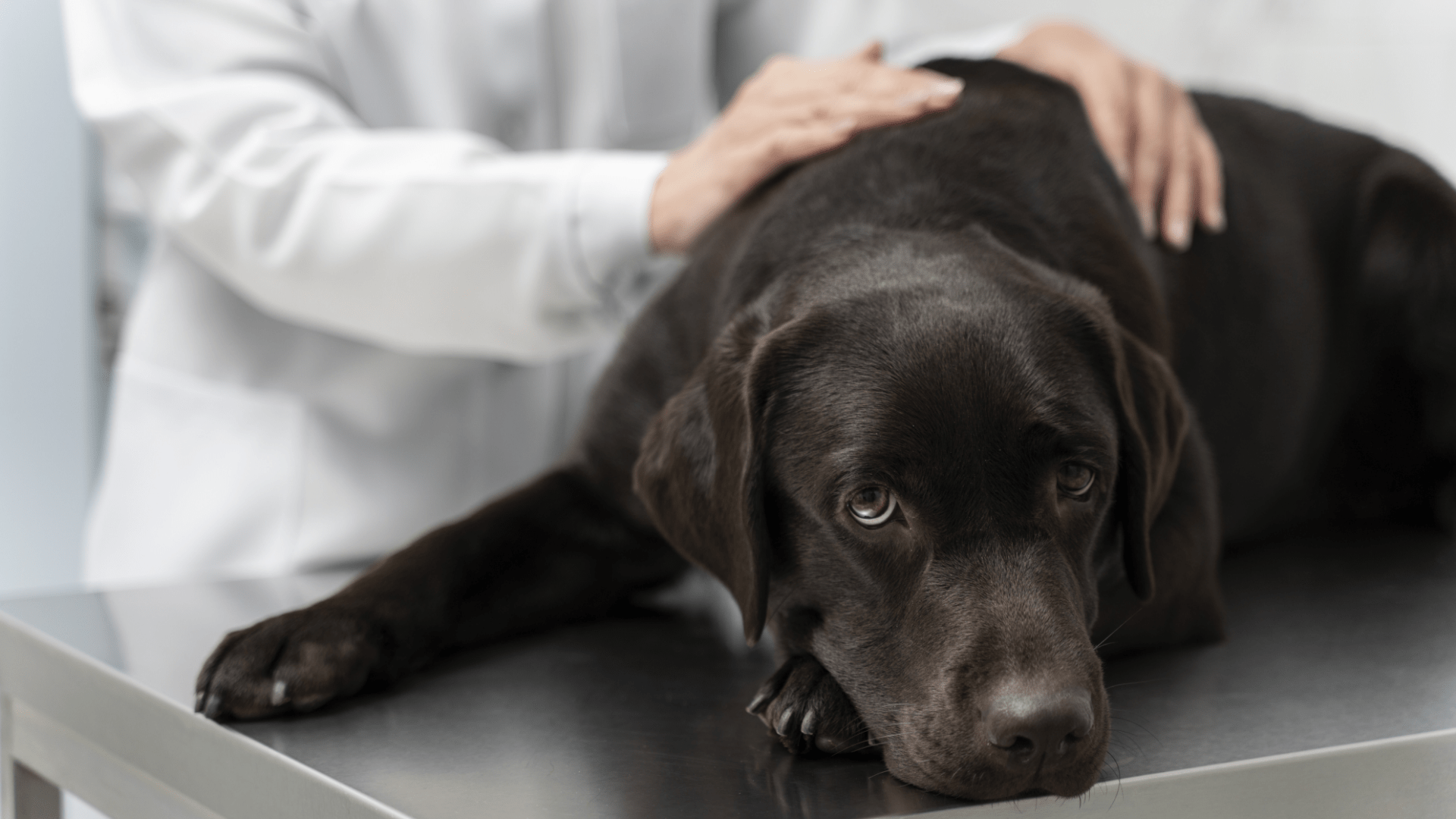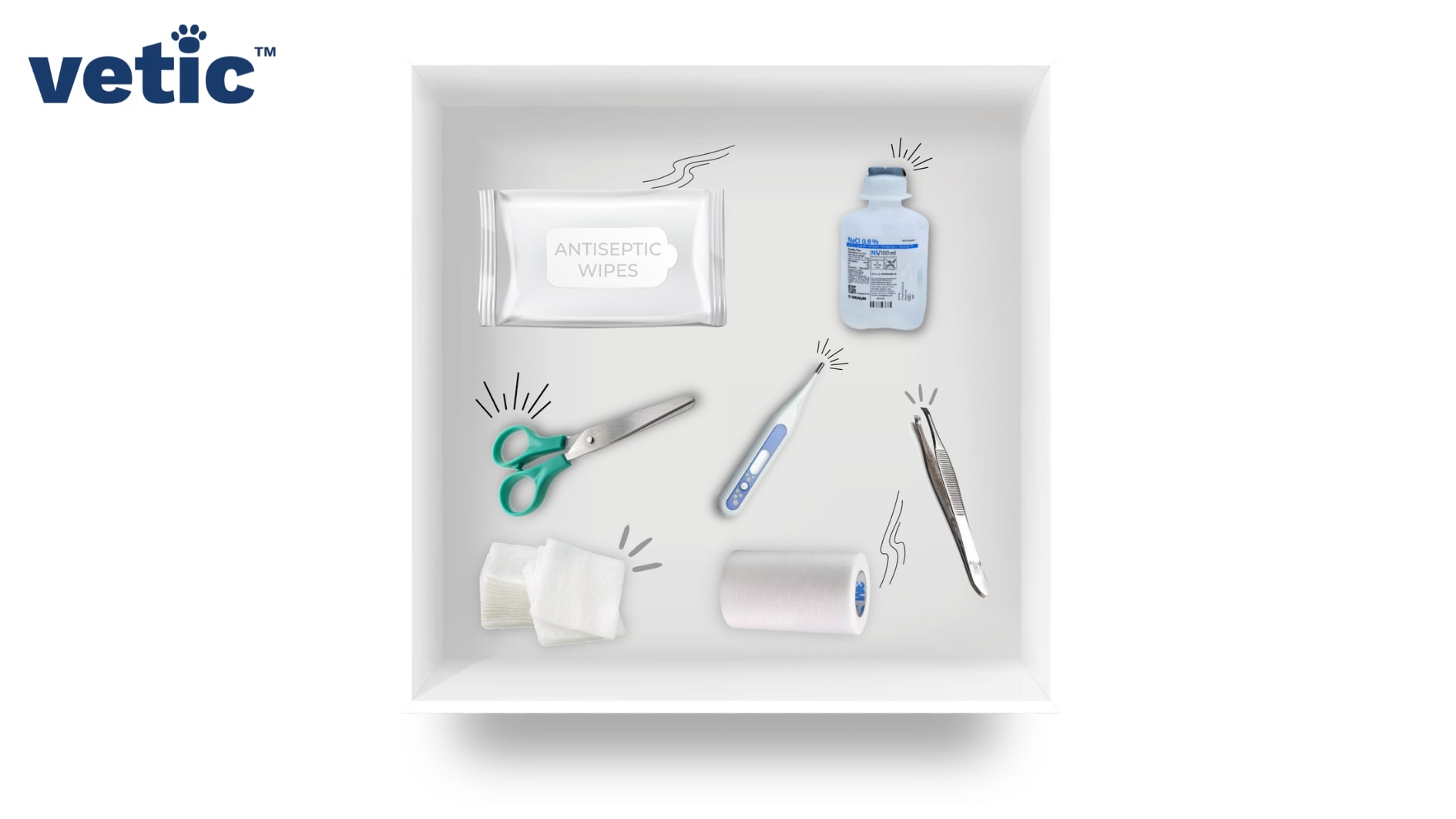We often struggle to understand the signs and symptoms of emergency situations in pets. As pet parents, it’s our responsibility to learn everything that might indicate an emergency in pets.
Here are 20 signs of different emergency situations during which a pet needs immediate veterinary attention and care –
- Recurrent vomiting and/or diarrhoea
- Pale or whitish gums
- Lethargy (or “laziness”)
- Stubborn coughing
- Persistent reverse sneezing
- Seizures
- Excess bleeding
- Blood in vomit, urine and/or stool
- Sudden limping
- Loss of appetite
- Laboured breathing
- Rapid breathing or persistent panting
- Difficulty in standing up
- Loss of coordination
- Ingestion of inorganic/indigestible objects
- Consumption of human medicine
- Overdose of their own medicine
- Sudden change in behaviour
- Unnaturally long labour (in pregnant animals)
- Suspected poisoning or ingestion of toxins
What should a pet parent do during a pet-related emergency?
Remain calm.

We know how challenging it is to keep your composure when you see your furbaby suffer. However, if you begin panicking, your pet will catch on and they will begin feeling anxious as well. Coupling anxiety with sickness will not serve your pet well!
You need to stay calm for your pet’s sake.
Note the signs you can see. Take a detailed video of your pet where their whole body is visible.
What should you do if your pet is throwing up and pooping repeatedly?

There is little you can do at home if your pet has persistent vomiting and diarrhoea. For example – if you give them medicines, there’s a good chance they will throw that up as well. ORS can make them more nauseated since they are already throwing up.
You need to make sure that your pet is warm enough. Wrap them in a towel and put a diaper on them if possible and transport them to the nearest emergency veterinary clinic no matter the hour.
What can you do when your pet is bleeding profusely?

In most cases, bleeding should stop naturally within a minute or so. If there’s a lot of blood pooling from the injury site you should consider that a main blood vessel has suffered a tear.
Use a clean surgical gauze soaked in plain saline to apply pressure on the wound and transport them to the nearest veterinary clinic ASAP. You can use clean towels or a freshly washed t-shirt to make a temporary bandage. Do not clean or remove clots from the site of bleeding.
The clinic can give your pet meds to stop the bleeding and fluids to make up for the loss of fluid volume through bleeding. Do not wait for long since heavy bleeding can send your pet to shock.
What should you do in case of breathing trouble in pets?

Breathing trouble is one emergency situation that demands immediate attention. Firstly, lift your pet’s head up at a comfortable angle that helps them breathe a little better. Check the colour of their gums. If they are very pale or bluish, they need IMMEDIATE veterinary care.
Next, check for obstructions inside their nose and throat. If you see something that is easily removable, try to remove it using your hand. Ask someone for help who can hold your pet steady and preferably hold a torch so you don’t hurt your pet.
Otherwise, your pet will need oxygen support and other breathing support that you will find at any 24/7 emergency veterinary clinic near you.
How to help a pet with a very high temperature?

Your pet might be panting or breathing rapidly if their temperature goes beyond 103 degrees Fahrenheit. They may be experiencing a heat stroke or heat exhaustion.
In such cases pour cool water on their neck, chest and belly. Switch the AC and fan on. And let them rest.
Do not use ice packs or wet towels.
When transporting your pet, keep their fur wet and the AC inside the car on. Make sure they are comfortable when you reach your vet’s clinic.
How should you treat your pet who’s limping suddenly?

A sudden limp or lameness of a limb is a definite emergency in both cats and dogs. Do not wait to see if their limp goes away on their own.
If you see your cat limping or showing lameness of their hind leg(s), you need to consult a vet immediately.
For dogs, check for external injuries. If there are injuries, assess the swelling and pain. If there’s a possibility of an internal injury or fracture, stabilise the limb as much as possible and call the vet.
Ingestion of objects, medicines or food pets shouldn’t be having: What should you do?

Do not try to induce vomiting and do not give them laxatives without the consultation of a veterinarian.
Depending on the nature of the thing swallowed, the veterinarian will recommend imaging tests, blood and biochemistry tests, fluids, stomach pumping and/or surgery.
There is little you can do at home if your cat or dog has ingested a foreign object, human medicines or toxic foods. Make a note of what they have eaten and tell that to the veterinarian as soon as you reach the clinic.
What should you do if your pet is suddenly losing balance or unable to get up?
Your pet could be suffering from a stroke, viral infection or shock. Do not delay.
Whenever you see your dog or cat behaving in a “drunken” manner, you should consider it a definite emergency. Calling your veterinarian is a good idea. Book a home visit if your pet seems too sick to travel.
What do you do when your pet is having a seizure?
Do not try to move them when your pet is seizing. Move sharp objects away from your pet and turn off bright lights. Minimise noise and do not call out to them loudly. Do not pour water on them while they are seizing. Do not try to hold them down or insert anything into their mouth. You can take a video of them for your veterinarian.
Once their seizure is over, they will be disoriented for a while. Keep the room dark and cool. Give them 2 minutes to reorient themselves. Don’t give them anything to eat or drink immediately.
Call your veterinarian once your pet is stable. If they recommend a medicine, stick to the correct dose and time. It is not a good idea to travel with your pet during or soon after a seizure.
How to make a pet first-aid kit at home?

Here are a few things your pet first-aid kit should contain –
- A thermometer
- Sterile gauze packets
- Normal Saline (NS) for wound washing
- Bandages
- Forceps
- Scissors
- Disposable gloves
- Doctor’s tape (micropore)
- An antibiotic ointment
Keep the contact details of the emergency veterinary clinic near you handy.
Unless you have experience in handling emergency situations with pets, always consult a veterinary professional before administering first aid to your pet.
How can you help your pet further during an emergency?
- Learn basic bandaging techniques to stop bleeding and immobilise possible dislocations or fractures.
- Learn the Heimlich manoeuvre. It can help you dislodge any item stuck in your pet’s windpipe.
- Learn CPR for dogs and cats. CPR or cardiopulmonary resuscitation can help save your pet’s life at a critical time.
- Find out more about life-saving medication from your veterinarian. Keep a small stock of SOS medications for pets at home.
Learn when it’s an emergency for your pet!
Knowing when to call a veterinarian or visit one is very important for all pet parents. If your pet is having breathing problems, stubborn high temperature, repeated seizures, persistent vomiting and diarrhoea, and profuse bleeding, there’s NOTHING you can do at home to help.
You need to take your pooch to a veterinary clinic near you.
